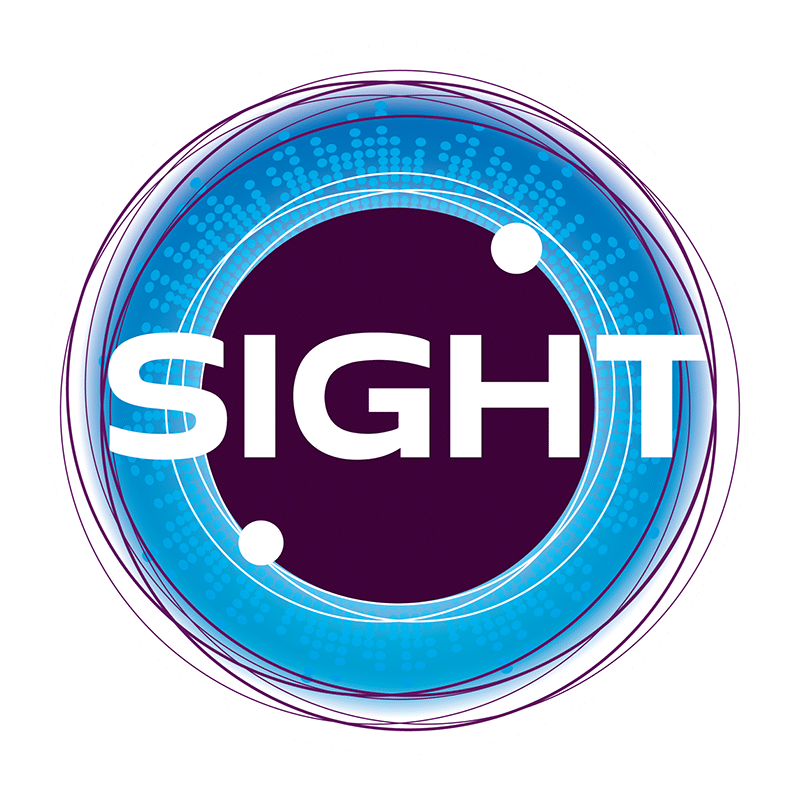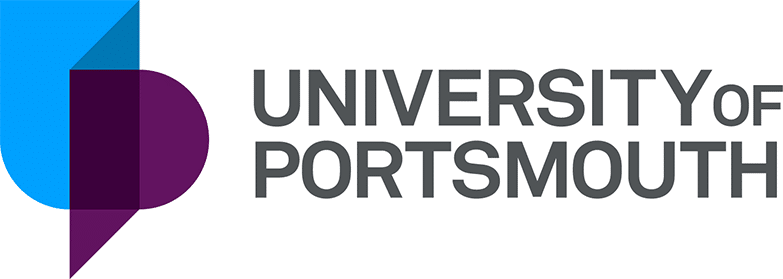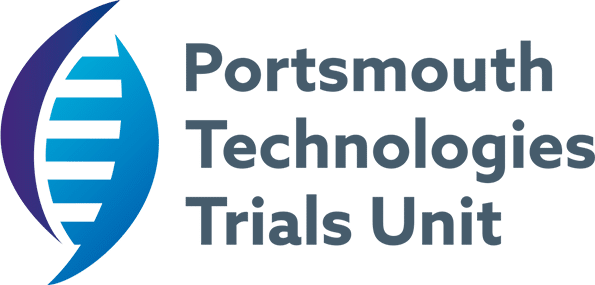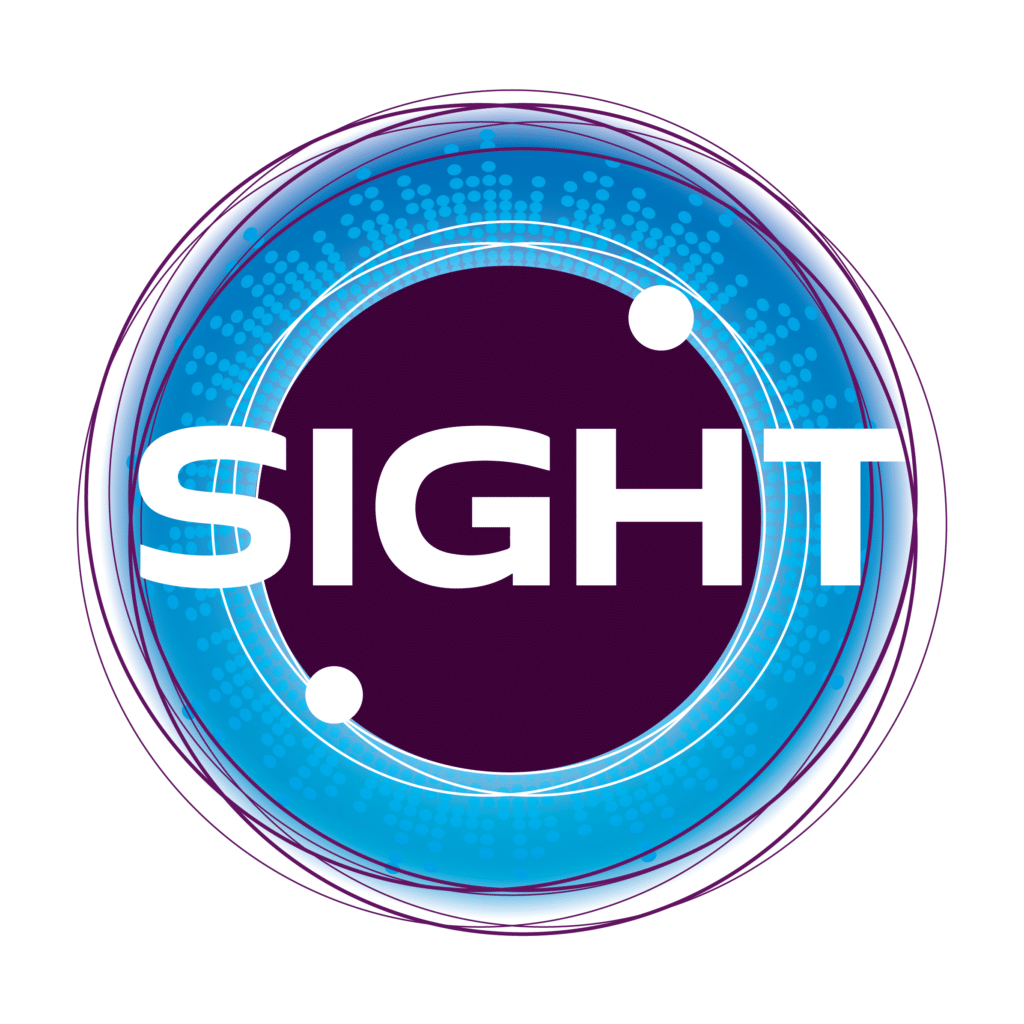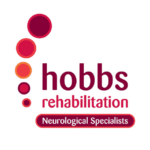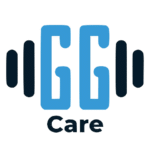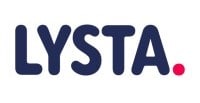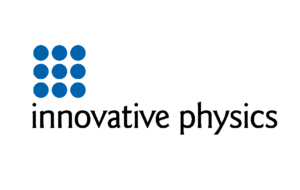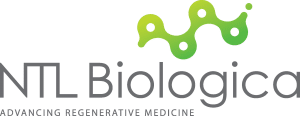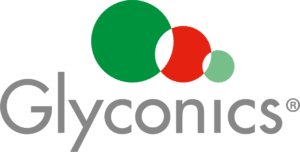Case Studies
SIGHT Programme Case Study: MyRenalCare
Virtual care and consultation app helps kidney patients take control of their own care and reduces referral waiting times
Over 12 months more than 1,200 patients with chronic kidney disease, under the care of the Wessex Kidney Centre at Portsmouth Hospitals, have been using the MyRenalCare app. The trial was part-funded by an NHS X Digital Health Partnership Award, with the charity Kidney Care UK also helping fund the project.
About MyRenalCare
MyRenalCare app supports patients to learn more about their condition, monitor their own health and contact their clinical teams directly whenever they need to. In addition, the app allows clinicians to remotely monitor their patients and gain access to more patient-inputted data, supporting more informed decision making.
The app also allows for virtual consultations without the need for phone or video calls. With the average virtual consultation taking around five minutes, MyRenalCare is helping to increase outpatient clinic capacity by as much as 30%. This creates more space for new and urgent patients, and has seen the referral time for new patients drop from four months to just a matter of days.
Potential outpatient cost savings of 25%
Independent health economics conducted by Keith Cooper and David Scott, from the University of Southampton, also shows the use of MyRenalCare can reduce costs of renal outpatient appointments by 25% at Portsmouth Hospitals University NHS Trust.
Dr Nick Sangala, kidney consultant at Portsmouth Hospitals University NHS Trust and CEO of MyRenalCare, said: “With ever-increasing demand on our services, we wanted to transform the way we deliver our outpatient care.”
“The MyRenalCare app has helped more than 1,200 of our patients directly with managing their own condition, and meant that other patients waiting for referrals or urgent appointments are waiting less time, which means more positive health outcomes for all our patients.”
MyRenalCare & SIGHT
Throughout the project, the behavioural change factors of moving both patients and staff to a virtual care setting were studied as part of the SIGHT Programme.
Dr Phil Jewell, SIGHT CEO, said: “It is incredibly exciting to see the positive difference MyRenalCare app has had on patients and clinicians alike. It demonstrates the importance of collaboration and bringing together researchers, clinicians and highly innovative SMEs to develop next generation technologies for improving healthcare.
“The health tech industry is of vital importance to both the local and national economy and it is our ambition to support companies like MyRenalCare in order to achieve greater impact on wellbeing and the lives of patients.”
SIGHT Programme Case Study: Hobbs Rehabilitation
About Hobbs Rehabilitation
Hobbs Rehabilitation is the largest independent provider of neurological rehabilitation in the UK. Over 100 clinicians offer interdisciplinary therapy, in community, residential and outpatient settings, using combinations of conventional, intensive and technology based treatment. Hobbs Rehab also provides education, clinical research and product development services. Hobbs Rehab recently founded The MiNT Academy – Masterclass in Neurotechnology. This innovative educational platform encourages interdisciplinary clinicians to embed neurotechnology into their clinical practice and enables product developers to collaborate at the design stage to produce clinically relevant products. Membership is free – visit www.themintacademy.co.uk to join.
The healthcare challenge Hobbs is seeking to address
The evidence base shows that treatment intensity and dosage are key in neurorehabilitation, optimising neuroplasticity. Clinicians are unable to provide sufficient intensity through conventional practice alone, and it is known that neurotechnology can enhance this. However, the clinical uptake of technology remains low due to many factors, including lack of training, inaccessibility, irrelevant devices and insufficient evidence. The MiNT Academy aims to identify and overcome the challenges which limit the implementation of technology into clinical practice.
Solutions offered include:
- Clinical Consultancy Packages for industry, promoting technology co-creation and user-centred design
- Clinical education for therapists
- Clinical partnership for research trials.
Collaboration with SIGHT, Portsmouth Hospitals University NHS Trust and the University of Portsmouth
SIGHT has supported Hobbs Rehab to develop MiNT from concept design to implementation. SIGHT webinars enhanced the knowledge of the MiNT Development Team, whilst newsletters and events increased MiNT publicity during our launch phase. Networking at SIGHT events connected MiNT to other SIGHT member companies, who we are now collaborating separately with. Hobbs Rehab also partners with University of Portsmouth on projects such as AiBLE and has a Biomechanics Team collaboration; SIGHT is now coordinating a larger clinical-academic partnership.
SIGHT’s support & impact
Hobbs Rehab is primarily a clinical service with a clinical workforce. SIGHT has enabled therapists to broaden their scope of practice, increasing business and research skills, uniquely positioning MiNT as a clinically led platform.
MiNT membership continues to grow, partly through SIGHT connections, with new research projects and funding opportunities promoting business development. SIGHT has also signposted MiNT to business management support, enabling expert advice in areas including IP, accountancy and grant funding.
Next steps & Future plans
MiNT regularly establishes new collaborations for device research and development. Expansion at Hobbs Rehabilitation Intensive Neurotherapy Centre, Bristol, will provide dedicated space for MiNT activity from September 2022, increasing capacity. Further clinical educational content will be delivered, whilst MiNT’s international following grows through participation in global events and conferences.
Hobbs Rehab are also planning to build a 35-bed specialist centre in Winchester which will combine clinical excellence, technology and design, with research and intensive rehabilitation programs, as well as post graduate training, which will be the first of its kind in the UK.
Company Testimonial: GG Care Ltd
GG Care, founded by David Grey, is about harvesting the potential of readily available technology in elderly and dementia care.
How did you first hear about SIGHT and what made you decide to become a Member?
I was introduced to SIGHT via Unlimited, as the two programmes operate in the same field. When I first started GG Care I wanted to join a University programme. I had previously joined an accelerator programme but the crucial missing part of that was the collaboration with academics. The other university programmes didn’t have the collaboration opportunities like SIGHT did.
Can you tell us a bit more about who you’ve been working with either at the hospital or the University, and what difference has that made to your company and your plans for growth and development?
I have worked with so many people from the University and a few from the hospital so far. My main contacts have been Dr David Lubega and Dr Phil Jewell and they have been the main conduit to academics. I’ve worked with Dr Amy Drahota (Reader in Health and Social Care Evidence Evaluation), Alison Keizer (Teaching Fellow and Dementia Lead for Sussex NHS Trust), Prof Adrian Hopgood (Prof of Machine Learning) and they’ve introduced me to a number of other people it’s a bit like a ripple effect, that has reached out beyond the University.
It’s given us the opportunity to apply for grant funding. We’re a health tech startup and we’re kind of stymied by lack of data to prove the validity of our product – a virtual dementia care companion. The contacts developed with the University of Portsmouth, Portsmouth Hospitals University NHS Trust and the Clinical Dementia team at the Sussex Community NHS Trust through SIGHT have enabled me to create a plan to gather that data and gain that validity.
What difference has being a SIGHT member made to you and your company – or what might you have missed out on, if you weren’t connected with us?
GG Care has applied for a grant for a project but the grant application is the project in itself. It’s a different skillset which isn’t as innate as people assume and SIGHT have helped us navigate that path of completing the grant application process, assembling the complete team and answering the questions effectively. There’s been a lot of benefit for the business because this application can be used as a basis for others. As a nonacademic, it was very helpful to get their input in explaining what we’re doing and the vision for the company in a way that assessors will understand.
If I was going to offer some advice to health tech start-ups I’d say: applying for grants is a role in and of itself. Respect the process and be patient. When I first started I thought: submit a grant in two weeks? That’s fine, I can do it myself and I have the will to get it done! But now, working with the academics, I understand that you need more time to flesh out the ideas, and they’re not just working on your things but they have other things too, so respect the time and the process that it takes.
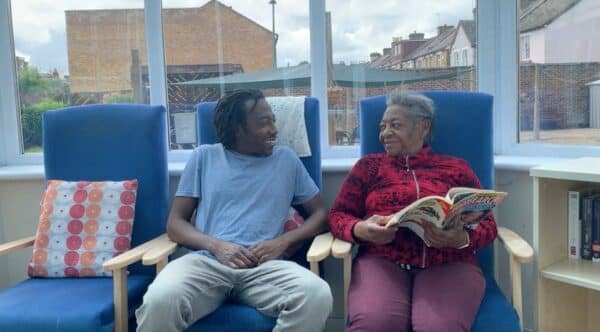

SIGHT Programme Case Study: Watercress Research Ltd
About the company
Watercress Research Ltd is an SME spun out from the University of Exeter in August 2019. The company was co-founded by Dr Kyle Stewart and Professor Paul Winyard who are an NHS GP and Professor of Experimental Medicine respectively.
The project started in 2015 while Kyle was working at Torbay Hospital and was looking after a child who was septic from infected nappy rash. Interested in the pathophysiology, he researched underpinning biochemistry and read that nappy rash from urine is an alkaline burn causing an irritant dermatitis. This occurs due to the action of the bacterial urease enzyme which catalyses the hydrolysis of urea in urine to ammonia.
He read about various plants which had been found to have urease inhibiting properties historically, and teamed up with Paul to start working on a project. Together, and with a generous grant from Torbay Medical Research Fund, Paul and Kyle discovered a novel method of processing watercress to concentrate the urease inhibitors, while also demonstrating promising skin soothing properties and a separate ammonia scavenging function, likely at least in-part through the stabilising action of the inherent isothiocyanates in the watercress extract.
Applications
Watercress Research are in discussion with several skin care companies to explore potential licensing agreements for the use of the extract in skin care products. Separately, the byproducts which are the watercress fibre and watercress protein are being explored for their use in food and drink with the protein demonstrating a superb essential amino acid profile. Other opportunities in agriculture and medicine are also being explored, and by turning a short shelf-life plant into longer shelf life products a whole new geography could be opened up to give people access to this brilliant plant’s properties.
A green solution for excess produce?
Watercress Research work closely with The Watercress Company in Dorchester who provide the vast majority of watercress to the UK, and is able to use the excess or waste watercress to turn it into valuable extract. They have found that excess watercress which is not harvested and therefore goes to flower is higher in glucosinolates than its younger counterpart. These glucosinolates are useful as they can be converted to beneficial isothiocyanates on disruption of the cell membrane during processing. Using this watercress minimises waste and leads to more efficient farming. Similarly, the stems left after harvesting, as well as the hardy over-wintered watercress which can’t be sold in salads contain more urease inhibitors than the commercially available salad leaves, and as a result it is a new source of revenue for The Watercress Company. Watercress Research are exploring how other waste streams in the fresh produce industry could be usefully reinvented.
Watercress as medicine
The Medicines and Healthcare Products regulatory agency (MHRA) are quite clear in their stance that a plant extract cannot be a medicine. Watercress intend to work closely with the MHRA to understand the evidence required whereby particular watercress extracts, perhaps from genetically identical cell lines grown aseptically and hydroponically, could be considered to have a medicinal effect in certain conditions. This is an interesting area of debate and one we wish to explore further.
Impact of SIGHT funding
The SIGHT programme was pivotal in allowing Watercress Research to fund their patent, licensing agreement with the University of Exeter, distribution agreement with The Watercress Company and other legal expenses. This allowed the rest of Watercress Research’s funding to be focussed on research and getting results which have put them in the position they are in today.
Visit their website www.watercressresearch.com.
If you are a Medical Device or MedTech company and you would also like to benefit from the numerous opportunities available through the SIGHT Programme, just as Watercress Research has, please contact us at sight@port.ac.uk for more information and a membership pack.
SIGHT Programme Case Study: Lynam Pharma
From a pharmacy to sustainable product development
Lynam Pharma is a small business with a big ambition to lead the change in improving sustainability and recycling rates in the healthcare sector. Their fully recyclable and biodegradable surgical gown with an anti-microbial coating has the potential to dramatically reduce the amount of plastic waste generated in the healthcare settings without compromising patients’ safety and comfort.
Shailesh Patel – the head of the company and a Portsmouth University Alumni, has been running a successful NHS pharmacy and medical supplies business for several years when he came up with the idea to develop a brand new product. At the beginning of 2020, when the global pandemic was starting to unfold, he was receiving numerous calls from customers who needed PPE. The demand for these products made Shailesh realise just how much plastic is produced and consumed by the healthcare sector, and that there was no sustainable, feasible alternative. Despite no background in product development, he decided to pursue the idea of developing and producing single-use, biodegradable surgical gowns, which could be used in a pandemic setting.
A biodegradable surgical gown
With the help of a grant from Innovate UK, Shailesh commissioned a team to successfully develop the nanoparticle fabric, which can be used to make the gowns. To make them fully biodegradable, the design eliminated velcro and plastic thread – the gowns are welded rather than sewn. The nanoparticle coating kills viruses and bacteria that come into contact with the gown, making it safe to use in a large variety of healthcare settings. Incredibly, in just a year from the conception of the idea, Shailesh and Lynam Pharma had a ready product.
Great potential for improving recycling rates
Shailesh is keen on producing and supplying the gowns, but also other items made from sustainable materials to the NHS and private health sector. It is estimated that an average hospital uses several thousand gowns a month, as well as thousands of gloves, medicine bags and other single-use plastics. Even reusable gowns don’t provide an answer, as in practice they only get reused a handful of times, which is well below their intended lifespan. Shailesh hopes to produce the gowns on mass scale, and develop a system for collecting and recycling them easily. Made from simple polymers, the gowns can be recycled and the material reused for brand new products.
Lynam Pharma is currently working on the design of the packaging bag that the gown will come in; ensuring that it is hygienic while also being biodegradable is a challenge they are hoping to defeat next. The packaging bag material could be then also rolled out as medicine bags and sacks for patient property, both items currently being given away in thousands every month without any advice on their sustainable disposal.
Working with SIGHT
The SIGHT programme has introduced Lynam Pharma to Roger Draheim, a Reader in Synthetic Microbiology; together they will work on a project on the microbiology of the nanoparticles with the aim of determining how long the viruses and bacteria survive on the gown’s coating. This will help establish how quick and effective the gown is at protecting the patients from infections.
Speaking to the Portsmouth Technologies Trial Unit through SIGHT has also proven invaluable for the company. PTTU advised Shailesh against extensive clinical trials, which would be time and resource-intensive, and instead recommended a smaller observational study to help establish the effectiveness of the new fabric in a clinical setting.
Next Steps
The gown business will soon be spinning out from under the Lynam Pharma name to establish its own brand. Final agreements are being made with the manufacturer, and soon the gowns are likely to be available to order. The company is hoping to carry out more product development work to make a real contribution to the sustainability agenda within the healthcare setting, and make a positive impact on plastic-use habits without compromising patient safety.
More information on the Startup company, Greenleaf Surgical can be found at www.greenleafsurgical.co.uk
If you are a Medical Device or MedTech company and you would also like to benefit from the numerous opportunities available through the SIGHT Programme, just as Lynam Pharma has, please contact us at sight@port.ac.uk for more information and a membership pack.
SIGHT Programme Case Study: Medsii
Medsii.com is democratising access to healthcare information around the world
Pharma Sentinel is the company behind the new website and app – Medsii. Short for ‘medicines information for me’ – the platform aims to revolutionise access to information on healthcare for English-speaking audiences across the globe. Presently internet users are overloaded with the abundance of healthcare content on the web, and it is becoming increasingly difficult to recognise reliable, trustworthy information from legitimate sources- medsii is a platform enabling access to just that. Furthermore, most people only seek health content after a health condition has materialised, but Medsii uses AI to offer proactive data.
Perfecting the idea
The company founders originally met when studying for an MBA at one of London’s universities. Over a decade later, Rav Roberts, Nasir Hussain and Paolo Ursino subsequently met at their university reunion where they came up with the idea for a website. Their collective experience spanning pharmaceutical, digital and technology sectors makes them uniquely positioned to successfully develop and launch digital healthcare products. Even so, their initial idea to provide a website for easier reporting of side-effects did not go ahead. Instead it morphed into the vision of a platform providing comprehensive access to customised information on specific conditions and healthcare news in general.
Medsii
Medsii uses machine learning algorithms to select & push tailored content for users of the platform; it relies on medical journals and other high-quality information sources. The information appears on the user’s screen as a feed – either personalised or not, depending on the information entered. For example, if a user has a specific condition such as diabetes, they can choose to see the diabetes-related content. Medsii’s layout and some of the functions are laid out in a similar way to social media platforms, making it very easy and intuitive to use. There is an option to comment on posts; the comments are moderated to ensure no misinformation appears on the platform.
Medsii is free to use, with optional premium subscriptions that enable access to premium content, such as specific allergies information, drug interactions or analytics dashboards.
Empowering patients
The content available on the platform is varied – from information on new studies, through medicines and treatments, to information on managing long-term conditions including comorbidities. Users can read about how their condition is managed across the globe in English-speaking countries, and become better-informed as to what is available, which they can then seek locally. As patients become empowered, it is hoped the governments and healthcare systems around the world will learn to adapt innovation faster to meet patients’ expectations.
It is estimated that 46% of the UK and 40% of the world population has a chronic condition, while 66% of USA adults use prescription drugs. Very commonly these patients develop co-morbidities as they don’t know they are at risk until it is too late. By increasing access to reliable information, medsii is hoping to change this.
Support from SIGHT
Pharma Sentinel joined SIGHT in 2021. They are hoping to pilot the use of the Medsii app in selected NHS trusts to get a better idea of how access to information impacts the users’ behaviours. They are also hoping to apply for an Innovate UK grant to allow them to launch further services as part of the platform.
Expert-curated content
Pharma Sentinel are also hoping to generate high-quality content with the help of expert writers. Using the same principles as Substack – rewarding writers for the best content – the company is hoping to create a premium service where the platform users get access to exclusive medical news and publications, and the writers get the recognition and financial reward. The company is currently running a trial and recruiting writers for this service, inviting healthcare professionals, scientists and academics to apply.
Since its launch, the medsii app has had over 50000 downloads on Android and Apple, and it is rapidly growing its user base. As a platform, it has great potential as a B2C, but also B2B service. Most importantly, medsii is curating high-quality healthcare content, helping to stop misinformation and aiding people around the world to make sense of their health issues.
If you are a Medical Device or MedTech company and you would also like to benefit from the numerous opportunities available through the SIGHT Programme, just as Pharma Sentinel has, please contact us at sight@port.ac.uk for more information and a membership pack.
SIGHT Programme Case Study: Disable The Label
Disable The Label app helps parents of disabled children find support
Disable The Label is a microbusiness behind the application of the same name that helps parents of disabled children by providing extensive information, signposting them to services and explaining processes and procedures they might have to face. The recently launched app is designed as a one-stop portal for information and condition-specific services.
The founder of Disable The Label is Ceri Winfield – a rehabilitation therapist who has worked with numerous families with disabled children in the past. During the pandemic it became apparent to Ceri that the parents were struggling with finding the right information and services to help them care for their children. The pandemic made the accessibility issue worse, as many of the families have been isolating due to the significant risk a COVID infection would pose to them. To address this, in February 2021 Ceri set up the company and embarked on the app development.
The app to support the parents
The app currently has a directory consisting of eight categories: Sports, Activities, Holidays, Funding, Therapy, Equipment, Clothing and Support. The directory lists over 200 companies and charities that offer a variety of services and goods aimed specifically at disabled children and parents. Disable The Label list basic information about each of the companies; the business can choose to pay a subscription fee to allow them to display further information, such as photos and hyperlinks to the products. The app is fully transparent and makes it clear to the users that certain features have been paid for. The companies and charities are vetted to ensure they provide real and trustworthy products that can be of value to the users.
Currently awaiting its launch, the support section of the app is a guide that helps the parents navigate the often very complex support systems and processes, explaining how to ensure they access everything they are entitled to. For example, the holidays section clarifies the rules of travel for the disabled passengers, reminding parents of their rights in the UK and abroad, as well as listing disability-friendly travel providers.
The app is rapidly growing its user base. As a not-for-profit, it is relying on word-of-mouth and social media for promotion. Ceri hopes that in time the app will become a go-to recommended product for parents with disabled children, with information about the app given to them at the point of their children’s diagnosis. There are 800,000 children with disabilities in the UK, therefore the potential user base is significant.
Support from SIGHT
As a non-profit organisation, the funding is a challenge. SIGHT has been helping Ceri identify potential funding sources, but also critically evaluate them to decide which opportunities are most worth applying for. SIGHT has also helped introduce Ceri to clinicians at the Portsmouth University Hospital Trust; the founder is hoping to use their expertise to produce a range of short videos about disabilities that will break down the medical jargon and explain the conditions in a plain language.
Future steps
Disable The Label is hoping to grow the user base as well as the number of services featured on the app. Ceri is also developing videos and podcasts about disability, and is planning to create a parent portal within the app to enable the users to access the content and interact with it. The initial reception of the app has been very positive, and Ceri is hoping to grow the company further to be able to provide high-quality information to the parents.
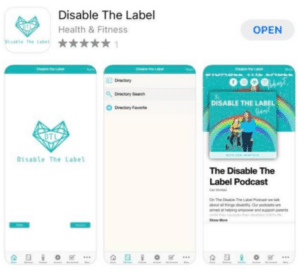
If you are a Medical Device or MedTech company and you would also like to benefit from the numerous opportunities available through the SIGHT Programme, just as Disable The Label has, please contact us at sight@port.ac.uk for more information and a membership pack.
SIGHT Programme Case Study: Lysta
Lysta is a new kind of social media platform that allows users to create and share list-based content. The company was born at the start of the COVID-19 pandemic as the founders seeked to create an alternative to the big and often negative social media experience.
About the company
A long-term fan of lists, at the beginning of lockdown Jason Frogget decided to put his idea of a new social platform into action. He partnered with David Caswell – an experienced advisor and investor in digital companies, whom he knew from one of his previous start-up projects and with Jon Todd – a specialist in digital and data transformation. They were later joined by David Lane, a computer science and AI specialist, and a founder of Fat Fish Studios. In just 15 months the platform was designed and built, and in March 2021 it was launched on the app store. With a deliberately small initial user base, the company is looking to develop Lysta further in conversation with real users to ensure it meets their needs. Excitingly, the company has secured a number of new investors, who bring a wealth of experience in digital industries to this new startup.
Content based on lists
Similarly to the founder – Jason – people tend to naturally organise information into lists. From shopping lists, through wish lists, bucket lists to rankings and classifications – lists are a logical and easy to process way of organising content. This is the premise of Lysta – as a user you post content organised as lists. This means you would typically have to spend longer creating a post compared to traditional ‘fire and forget’ posts on social media. As a result the content is likely to be of a higher quality, and present more of an opportunity for other users to engage. Unlike other social media, Lysta provides more structure to the content, which makes it easier to organise, find, and comment on. The posts can be reviewed and edited in time, to build stories.
Lysta is hoping to become a go-to-platform for lists and recommendations – and these could be about anything, from best films to watch, best local restaurants, to top wedding gifts and best guitarists of all time. As well as being publicly available, the lists can be shared by users with their friends and family. In time, and based on user interactions and feedback on the lists, the platform will be able to analyse the data and spot trends and crowd sentiment. This can be a great tool for gauging public opinion on everything and anything.
The wellbeing angle and next steps for the platform
Lysta has partnered with Welldoing, another startup founded by David Caswell, to provide mental health and wellbeing content for the platform. Lysta is hoping to become a more mental-health friendly app through the content they offer, but also thanks to the fact the way users create and interact with content is different.
The next stage in Lysta’s journey is to test the platform with user groups in organisations such as universities, and build high-quality content for users to interact with.
The Lysta app is available now, download it to start lysting things!
If you are a Medical Device or MedTech company and you would also like to benefit from the numerous opportunities available through the SIGHT Programme, just as Lysta has, please contact us at sight@port.ac.uk for more information and a membership pack.
SIGHT Programme Case Study: Dr Fertility
A young SME supporting patients’ quest for fertility products and fertility services
Dr Fertility is a young but already very successful SME that offers great quality fertility education, products, and fertility services through video consultations with fertility experts. The company was founded by two best friends: Dr Lucy Buckley (PhD) and Kobi McCardle, who realised there was a shortage of reliable information on fertility, and fertility products in particular. Trying and/or struggling to conceive can be emotional and scary, and there is a lot of conflicting information and poor quality or bogus fertility products in the online space Lucy and Kobi were passionate about changing this and decided to develop a platform offering high quality fertility education and fertility products – that’s how, in 2017, Dr Fertility was born.
Lucy’s background in the pharmaceutical sector and Kobi’s background in marketing and e-commerce made them uniquely placed to develop an ecommerce website and start working with suppliers and sell their high-quality products online. At the time, both Lucy and Kobi were on maternity leave, and they would take it in turns to process orders and respond to customer queries overnight, while also looking after their babies. Four years on, they no longer pack and ship all the orders – they work with a fulfilment centre – but the service is still very much personal. The founders attach a hand-written note and a lucky ‘stork’ charm to every order to wish each customer good luck on their journey.
The company has also expanded its offering to include fertility services in the form of video consultations and home diagnostic tests. In 2018 the company raised £1m of investment capital, which allowed it to grow the team and transform the e-commerce website into a digital health platform for fertility. The team now counts 12 staff across the technical, medical, financial and marketing teams.
Fertility advice and online consultations
The fertility education on the website takes the form of blog-style posts and videos. The content is written by medical writers, reviewed and referenced, so the readers can have the confidence they are receiving reliable information. The readers can also self-refer to a fertility specialist -a doctor, a nurse or a fertility coach. This means that they can have rapid access to specialised fertility care in a primary care setting. .
Dr Fertility’s consultations take place with fertility specialists with extensive experience in the field. They last between 45 and 60 minutes, allowing the doctor or the nurse to really understand the patient’s medical history, assess their and their partner’s sexual and reproductive health, as well as review the patient’s lifestyle and suggest a personalised plan to help them get pregnant. The consultation takes place online, it can be arranged very easily through the Dr Fertility website which shows the available appointment times or by calling the virtual clinic. This service allows the patient to be seen at a time that’s convenient to them and from wherever they are; it also allows them to get an assessment rapidly without having to wait for a fertility clinic referral. Dr Fertility is also able to offer home blood testing and are looking at expanding their range of diagnostic testing. Continuity of patient care is very important to the team at Dr Fertility, if a patient requires face to face care they will be referred to their GP or supported, so that they can make an informed decision regarding which private clinic is right for them.
Bridging the gap between primary and secondary care
The founders – Lucy and Kobi – hope to further scale up the business, develop their fertility services further and gain new customers searching for quality fertility education, products and services. With SIGHT’s support, they hope to work with NHS trusts to pilot the use of their platform as a way of addressing fertility issues in primary care. Currently, following a brief GP assessment, the vast majority of fertility diagnostics and treatment takes place in a secondary, clinical setting. Dr Fertility wants to bridge that gap between the primary and secondary care treatment, and enable patients to have an assessment and a conversation about their fertility before having to attend a fertility clinic.
If you are a Medical Device or MedTech company and you would also like to benefit from the numerous opportunities available through the SIGHT Programme, just as Dr Fertility has, please contact us at sight@port.ac.uk for more information and a membership pack.
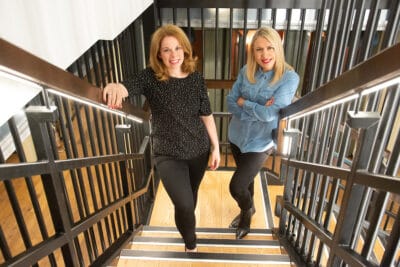
SIGHT Programme Case Study: iWantGreatCare
About the company
iWantGreatCare is what one might call ‘a mature startup’ and was founded by Dr Neil Bacon, founder of an earlier digital innovation called ‘Doctors.net.uk’, which dates back to the late 1990s. Even though the founder has moved on, the company is now 12 years old, has a headcount of 13 staff and ambitious plans for the future.
iWantGreatCare is a digital platform that enables patients to leave reviews about their experience with health providers and individual clinicians, be it positive or negative; it also enables the health providers to receive quantitative and qualitative feedback from their service users.
The idea for the platform was born at a time of several scandals, where patients were silenced or not listened to, which in turn led to poor outcomes for their treatment. iWantGreatCare was set up to create a way for patients to share their feedback in a way that’s independent and meaningful, and as a result, to transform healthcare through the patient voice.
The platform operates a model similar to TripAdvisor, with patients giving ratings and feedback on the care they have received from a provider or a clinician. A moderation process is in place to ensure the reviews are authentic. Although iWantGreatCare is open for patients to leave feedback about any care provider, the company works with specific care providers directly to gather feedback from their users and inform decision making. For example, if a healthcare provider wants to ensure it is listening to its patients’ views in real time, across all of its services, before introducing a change, they bring in the iWantGreatCare platform so that patients can be asked specific questions about aspects of their care or leave verbatim comments. The provider can subsequently use the real-time dashboard to see the results and the analysis of what they mean. The platform employs AI to run analysis of patients’ comments and pick up key themes.
iWantGreatCare enables patients to have an impact on the future healthcare provision through demonstrating trends and tendencies, but it can also lead to immediate and direct action as a result of their feedback. For example: a hospital patient can feed back on poor hygiene practices on their ward; their comments are sent directly to the provider, who can then instruct staff to address the problem, potentially reducing the risk of infection spread and improving patient safety.
The company boasts many success stories of immediate action taken as a result of the platform use. This includes the case of a patient who received poor treatment and experienced inappropriate attitude from staff when she had a panic attack during labour; her feedback led to all staff working for the trust receiving mental health training.
The iWantGreatCare website has over 2 million visitors each year and contains 6 million reviews; it has led to improvements in service experience in many trusts and healthcare providers. The company does not rest on its laurels and has ambitions plans for the future. Jon Twinn, the company’s Managing Director, says:
”There is a lot we can do to help at all stages of the patient journey, especially where the patient voice isn’t being routinely heard. Even right at the start of the journey where a better understanding of what is actually bothering the patient could change the entire care pathway. We want to give access to the data to people that need it, complementing clinical data with patient-reported data. We aim to make the public more aware of this data as a free resource to help them make informed decisions about their care”.
The company is also hoping to take the platform to the international market.
The company is working with the SIGHT programme to identify any gaps in data and find out where the platform could add value further. With the support of University and hospital staff, they are hoping to develop a mechanism to give clinicians easy access to patient data, including patient’s emotions at different stages of their journey to aid diagnosis and treatment decisions. The company wants to use SIGHT’s network and access to clinicians to hone in on those ideas to develop a tool that’s useful from doctors’ and patients’ perspective. Moreover, the iWantGreatCare team are engaging with The Centre for Creative and Immersive Extended Reality to explore opportunities for creating visual patient information that could be provided to the platform users depending on their responses, immediately addressing their needs. The membership of SIGHT may also be an opportunity to potentially partner up with other small businesses addressing other aspects of healthcare to create a joined up approach.
iWantGreatCare want to make a real impact on the healthcare sector through adding the patients’ voice to the clinical and statistical data, improving diagnosis in treatment and outcomes on large scale through changes at practice, hospital and trust level, but also on an individual level to ensure patient’s wishes and preferences are at the heart of clinical decisions.
If you are a Medical Device or MedTech company and you would also like to benefit from the numerous opportunities available through the SIGHT Programme, just as iWantGreatCare has, please contact us at sight@port.ac.uk for more information and a membership pack.
SIGHT Programme Case Study: Care Across Ltd
Care Across is a digital health start-up focusing on cancer. Their vision is to give patients and caregivers the best way to fight cancer beyond their hospital, from diagnosis to long-term care.
About the company
Care Across was founded by Thanos Kosmidis, an entrepreneur, and Paris Kosmidis, a medical oncologist. The company aimed to address the lack of tailored support for cancer patients beyond the clinical setting, where patients spend 95% of their time. Their answer was to use technology to empower patients with reliable information. The initial product was a social network, which later evolved into the current platform.
Navigating the healthcare system can be a challenge, and on top of that, getting further support can be overwhelming as patients may not even know where to start. Although additional information and advice is available through NHS and various charities, one has to sift through a lot of material to identify what may be relevant to their particular case.
Care Across provides a solution through an online platform that uses dynamically programmed algorithms to tailor information to each individual patient’s needs, delivering personalised content based on evidence.
Care Across website
To use the platform, the patient only needs to register and provide some information about themselves, particularly in relation to their specific conditions. The website selects relevant reading materials, videos and podcasts based on those answers. To tailor the content further, one is given the opportunity to enter additional information – the more details the platform has, the more personalised the experience of the patient. What is unique about the platform, is its ability to make recommendations based on patients’ side-effects, as well as their overall journey. For example, if a cancer patient is experiencing specific side-effects, they can receive practical tips based on a variety of parameters, including their specific diagnosis and treatments. Or, if a patient appears to be losing weight at an alarming rate, the algorithm can identify and alert the patient of the risk of complications associated with excessive weight loss, which is common and can be dangerous in their condition.
Beyond improvements in quality of life, the algorithm can provide advice on day-to-day management of cancer for patients suffering from other conditions such as diabetes: the patient receives a more complete and holistic view of their health from scientific sources. Moreover, patients can receive personalised advice on a range of topics, including nutrition, physical activity, supplements, emotional wellbeing and mental health, etc.
The company clarifies that medical advice should only come from patients’ medical team. However, patients can also choose to have a common view of their journey and day-to-day experience with their clinicians, thus enabling remote patient monitoring.
Finally, the platform is also a channel for patients to engage in, and be matched with, clinical trials.
Support from SIGHT
Care Across joined SIGHT to get some help with two tasks: enhancing the management of its intellectual property, and validating the company’s approach to health management in a clinical setting. Through the programme, they have been able to access an intellectual property expert through events and individual meetings. The company is currently working with the programme coordinator to engage the oncology community to offer a better understanding of the cancer experience from the point of view of the patient, but also to receive valuable feedback about the platform.
If you are a Medical Device or MedTech company and you would also like to benefit from the numerous opportunities available through the SIGHT Programme, just as Care Across has, please contact us at sight@port.ac.uk for more information and a membership pack.
SIGHT Programme Case Study: ioLight
From climate change research to COVID-19 testing
Like many great stories, the story of ioLight started in a pub, where in 2013 two serial start-upers came up with the idea for a new product. Richard Williams and Andrew Monk realised that in the microscope market one can buy a ‘traditional’, very large and heavy microscope, or a small, low-resolution microscopes from an online retailer – there was no compact, high-quality microscope for use outside of the lab. They wrote down the desired specification for the microscope there and seven years later the company sells a range of portable microscopes through partners across the world.
The product
The idea of the product was to enable scientists working in a field to analyse samples on the spot, using light yet accurate equipment. The microscope fits on a palm of a hand and requires just a few seconds to set up. The device creates a wireless hotspot, which enables the user to view the image from the microscope in good quality on their mobile phone. Those features make it an ideal product for field work, and has been tested in some very remote and challenging conditions, such as the Himalayas.
The ability to analyse the samples in the field is helpful for scientists working to understand the effects of climate change on microorganisms, and is of great use to biologists, but also to veterinarians who can diagnose diseases on the spot, enabling quicker treatment. The microscope can also be used in a medical setting, to aid diagnosis in remote communities that don’t have easy access to health infrastructure.
Faster, cheaper and more accurate COVID-19 diagnosis
The recent pandemic and the need for rapid testing inspired the most recent of ioLight’s projects. ioLight is reading nanostructured microscope slides from Finnish company Xfold imaging to amplify and detect viruses such as COVID-19. Importantly, this technique could be more sensitive, cheaper and quicker than the PCR test – meaning a robust diagnosis can be made in as little as 15 minutes.
Rapid, accurate and cheap COVID testing has numerous applications; because the device is light and easy to use, it can enable rapid testing, provide reassurance and prevent further outbreaks in places where large numbers of people congregate or pass through, such as schools, universities, in shops and services, at festivals and airports.
The Partnership between ioLight and SIGHT
The company is hoping to add the COVID-19 testing device to its range within the year. The founders are working with the SIGHT programme to gain support in validating the testing process in a microbiology laboratory to verify the sensitivity. This will help the team to understand the desired specifications before optimising and producing the device. The second stage of development is to correctly identify the potential markets and buyers- this is another area the company is looking to be supported with by SIGHT.
ioLight’s microscopes have very successfully filled a market gap; the company sold the products to top universities in the UK and abroad, and to researchers and research groups including the National Geographic Climate change team. The new device has the potential to be just as (if not more) commercially successful as the microscope. ioLight’s products are not only innovative, but also reliable and relatively inexpensive, and their application can make a real difference for important world issues, from climate change to pandemic control and prevention.
If you are a Medical Device or MedTech company and you would also like to benefit from the numerous opportunities available through the SIGHT Programme, just as ioLight has, please contact us at sight@port.ac.uk for more information and a membership pack.
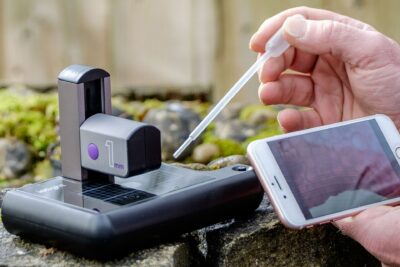
SIGHT Programme Case Study: Jiva.ai
About the Jiva.ai
Jiva is a young SME hoping to make an impact on patient outcomes through the use of an AI platform that will enable automation, recognize hidden patterns and capture key insights from clinical data sets.
The company was founded by Dr Manish Patel, Dr Chetan Kaher and Sarah D’Souza. Their combined background in mathematics and medicine makes them uniquely placed to employ the principles of large datasets analysis in a healthcare setting. The original idea for the algorithm models behind the platform comes from Manish’s PhD project; having honed it over the years, in 2018 the founders decided to apply it in a healthcare setting. The fruit of their work – the Jiva.ai platform – enables individuals and organisations to create multi-modal AI systems.
The platform
Jiva is a platform offering a toolkit to develop AI-based data-analysis models. Using the platform to create Machine Learning models allows to analyse large sets of clinical data and spot the patterns that indicate abnormalities. Because the platform is responsive, it allows the user to input and consider additional information as it becomes available, the algorithm can take the new discoveries into account and quickly adapt. This has important implications for clinical trial optimisation, as it can automate processes and reduce waiting times, shortening the pipeline to understanding and acting on the results. The platform also has a significant potential to improve patient outcomes in clinical settings, as it can scan through data to recognise hidden patterns, and alert the clinician if the patient is more at risk.
”Jiva is the world’s first multimodal AI platform. In it one can create, test, validate, share and deploy their models for collaborative advancement” – Manish Patel
Current products based on the platform
The company is currently involved in developing three clinical products based on the platform: a prostate cancer detection product, for early liver disease detection product and for bone fracture analysis programme. In prostate cancer detection, the AI aids the human radiologist in analysing MRI scans, reducing human error in diagnosis and false positives as well as reducing the cost of diagnostics. The use of the platform in the liver disease detection project enables the creation of a model that screens large quantities of primary care data, such as general practitioners’ medical records, identifying patterns leading to the disease. This can lead to earlier detection and prevention. When it comes to the bone fracture analysis, the application of AI in emergency departments facilitates the triaging of collar wrist and hip fractures. The emergency departments are often staffed with junior doctors, who may be more likely to miss certain injuries such as hairline fractures; the use of AI improves their learning and the diagnosis.
The platform is unique in that it provides the tools and building blocks to create AI-based products, making it versatile and adaptable. Its use can lead to a range of diagnostic tools, helping not only to streamline and reduce the costs of testing, but have a real impact on patients’ lives through prevention and earlier, more reliable diagnosis.
Working with SIGHT and Universities
Jiva has worked with a range of higher education institutions, including Robert Gordon University, University of Manchester, and now University of Portsmouth. The company is passionate about enabling clinicians and researchers to develop their own AI-models based on the platform. Jiva opens the platform up to researchers, allowing them to keep the IP rights over the products they develop based on the platform.
Jiva is hoping to connect to the Portsmouth University Hospitals Trust through the SIGHT programme, to be able to trial and verify the validity of the prostate cancer detection product with the help of the patients from Portsmouth.
If you are interested in finding out about and using the platform, go to the company website: https://www.jiva.ai/
SIGHT Programme Case Study: Innovative Physics
About Innovative Physics
Innovative Physics, based in Shanklin on the Isle of Wight, is a company with a worldwide reputation for its pioneering technology using pattern recognition and Artificial Intelligence to help detect, identify and grade radioactive material in the nuclear sector. They have also gained recognition for the use of their technology in other markets such as homeland security, waste, and agriculture.
The company has, in recent years, also sought to develop technology that can be used as a medical diagnostic tool to aid clinicians, radiologists and consultants enabling them to classify data quickly and accurately from CT images meaning patients can be diagnosed and treated more quickly and at a lower cost.
Working with the SIGHT Programme & Future Plans
With demonstrable successes in early clinical trials for lung cancer where the technology returned results in minutes, Innovative Physics is hoping its membership of this key programme will enable it to engage in further clinical trials and help bring its products to the market.
“The application of artificial intelligence has endless possibilities in both trials and in clinical diagnosis and to advance the precision and speed of the process. We are confident that our products can help make significant inroads in the healthcare sector but as a relatively small business, it is difficult to overcome the barriers to entering these markets which are often dominated by large multinationals. We hope that through our link with SIGHT we can make a breakthrough into the healthcare sector and realise our ambitions of bringing our potentially ground-breaking products to the marketplace” – Victoria Anderson-Matthew, Business Development Officer at Innovative Physics.
Dr Phil Jewell, SIGHT business development and programme manager said: “Many great innovations are probably being lost because people struggle to navigate the development and commercialisation process. The SIGHT programme helps to bridge that gap and provide innovators with the right access and resources to accelerate their entry to market. Innovative Physics have some extremely interesting technologies which could prove invaluable in the early detection and management of cancer and our hope is that, through this programme, we can help them fast track their products to market and deliver those benefits to many people.”
SIGHT Programme Case Study: Welldoing
About Welldoing
Welldoing is a company which focuses on matching up therapists to patients, based on the issues or reasons that the patient is seeking therapy.
With the majority of services available, such as tradespersons, dentists, dog walkers etc, people will frequently ask their network for recommendations. However, people are far less likely to ask friends or family for recommendations for therapists, they may not even be aware of who in their network is going through therapy. A recommendation may not always be suitable anyway, as they may specialise in a completely different area.
Searching online is not a great solution either. Normally, when looking for therapists, individuals are not in a great place personally. The stress of endless internet searching is more likely to cause anxiety and stress.
The Welldoing website contains an algorithm which matches clients to the best therapist for their needs. This can also include factors e.g. whether you would prefer a face to face, telephone or virtual meeting. The site provides a comprehensive list of therapists, who are subscribed to the platform, and their profiles. Clients can then contact therapists on the site, make appointments and make payments.
The website also contains a vast collection of relevant content, providing advice and resources. This information has all been written by therapists or patients, so is valuable to a broad range of people.
Opportunities and Challenges
COVID has opened up new opportunities for the therapy community. Although virtual therapy sessions have been available for a few years, since March 2020 this has become the primary delivery mechanism for therapy. Some clients have reported that they actually prefer this method, as they feel more comfortable in their own home, on their own territory, which has disinhibited them. However, it has caused issues for those clients whose home environment does not allow for a great deal of privacy. However, in these cases, other delivery methods have presented themselves, such as conducting the session on their mobile phone whilst walking for their one hour outdoors exercise.
The increase of therapy available, in a virtual format, has removed previous barriers based on location. A client in London may have found they were best matched to a therapist in Manchester. This would not have been feasible for face-to-face meetings but, by using online technology, has barrier has now been removed.
However, COVID has also raised a number of issues for the general public. The number of people experiencing anxiety, stress, relationship issues etc, has multiplied significantly. Welldoing have also experienced an increased number of parents seeking assistance for their children, as a result of lockdown, school closures and changes to their environment.
The Partnership between Welldoing and SIGHT
Welldoing joined the SIGHT Programme in the Spring of 2020. They saw the programme as a great opportunity to raise their company profile and to work with other companies who have similar goals and challenges. Opportunities such as introductions to relevant clinicians and affiliate companies were appealing, in addition to the grants available through the programme.
Results from SIGHT Membership
Welldoing applied for and won a SIGHT grant during the summer of 2020. The plan for these funds was to instigate a technical development programme and to implement a digital marketing strategy, including Google and Facebook ads.
To date, Welldoing has grown their platform to:
– 11,000 therapists
– 25,000 individuals who have been matched to therapists
– 56,000 visitors to their website per month
As well as the benefits of the grant, Welldoing are also very excited by some of the introductions which have been facilitated by the SIGHT Programme, including Portsmouth University Hospital NHS Trust and Portsmouth Technology Trials Unit.
Future Plans
Welldoing has a number of exciting plans for the future. One of their primary objectives is to add coaching to the website. 7% of the therapists currently on the platform are also coaches. Welldoing plan to have a broad range of specialities including executive, business, health, fitness and life coaches.
They would also like to use this opportunity to work closer with organisations such as the NHS. For example, a health and lifestyle coach could assist someone, who has recently been diagnosed with diabetes, to settle into a new, healthier regime to improve their overall health and learn to live with their new condition.
They are also beginning to develop a corporate offering for companies who wish to offer support in the form of therapy for employees or the best coach for their executives. Welldoing will work with those individuals to ensure they are matched to a suitable therapist or coach, so that the client receives the maximum benefits from their sessions.
SIGHT Programme Case Study: GenomeKey
About GenomeKey
GenomeKey is a UK-based SME established in 2019. Their primary focus is to develop an IVD diagnostic device that will allow for the clinical diagnosis of bacterial sepsis in a significantly reduced turnaround time.
Currently, one fifth of the world’s deaths are due to sepsis and it kills more people per year than cancer. This is a huge medical problem in the UK and estimated associated costs to the NHS are around £2billion per year.
The current process for identifying sepsis is for a clinician to draw 10ml of blood from the patient. The sample is sent to the microbiology laboratory, where it is cultured to grow the bacterial, in order to identify which antibiotics may work for that patient. This process takes an average of three days. During this time period approximately one third of sepsis deaths will have already occurred. Long term, the other concern is that due to historical dependence on antibiotics, there is strong resistance with no new antibiotics being developed.
GenomeKey want to circumvent the current three-day process of culturing a sample and, instead, developed a way of conducting a DNA sequence of the pathogen from the blood sample – this is likely to take just 4 hours. The results will tell the clinician everything they need to know: what it is, how fast it will grow, toxicity and which antibiotics are most likely to work. Potentially, this could save the NHS in the region of £2500 for every sepsis patient treated, as well as preserving antibiotics for the future by preventing over use or misuse.
To date, GenomeKey have proved the concept of their solution in that the tools developed will be superior to the current technology. They began by looking at staphylococcus aureus to accurately predict whether that particular strain would be methicillin resistant, succeeding with a 99.8% sensitivity and specificity. They are at an early R&D stage and recently have won a substantial grant to fund the development of the technology.
Opportunities and Challenges
Fortunately, GenomeKey has not encountered too many challenges during the COVID global pandemic. However, the situation has meant that their access to hospitals and clinicians for insight and feedback has been limited.
GenomeKey have used the lockdown as an opportunity to establish the company as completely remote. Adapting to the new way of working means that founding members are all permanently working from home and this has been communicated to their investors and stakeholders. This will also provide them with further opportunities when expanding their team. They will be able to employ the best people, regardless of their location, instead of the traditional focus being on sourcing the correct skills and knowledge in a particular geographical location.
Partnership with SIGHT
GenomeKey joined SIGHT following a personal recommendation by the Director of Innovation at the University of Portsmouth. GenomeKey had approached the university as they needed an academic partnership as part of their five-year grant application. In addition to the university agreeing to a long-term strategic partnership with GenomeKey, they also joined SIGHT at the very beginning of the programme.
As part of the SIGHT Programme, GenomeKey were able to visit the Portsmouth University Hospital to tour the microbiology laboratory. This provided them with the opportunity to speak with leading clinicians about their solution, plus gain the required knowledge about the current process of using blood samples to identify potential sepsis. GenomeKey were also able to see the equipment currently used and gain valuable feedback as to how the process could be improved in the future.
Pre-COVID, GenomeKey were also introduced to the Intensive Care lead clinician at Portsmouth University Hospital, where they gained substantial information and insight regarding the treatment of patients with sepsis. They hope that, post-COVID, these discussions will be able to recommence.
As members from commencement of the programme, they have seen many membership benefits. In person and online webinars were found to be very useful, covering a wide range of topics. Opportunities to network with other member companies were very beneficial. The integrated research culture between the university and hospital also allowed them to ‘bounce’ ideas around new colleagues and contacts, providing excellent feedback. The opportunity to tour the microbiology lab at Queen Alexandra Hospital, organised by the SIGHT Programme, provided them with insight which they would not have been able to gain any other means.
Future Plans
GenomeKey has a number of exciting plans for the future, starting in December 2020 when their grant award begins a five-year research programme. It is anticipated that their current team will grow from four to nine people, to enable the research to be conducted in the required time frame.
The goal is to develop a generic genotype to phenotype mapping system which can interpret any genetic information. A suite of algorithms will be developed to map samples accordingly. Currently, the ability to interpret the human genome is limited by the technology available. GenomeKey propose to introduce better tools in order to more accurately detect and identify disease from a human genome.
Although primarily focused on bacteria, the GenomeKey team also want to research the expansion to other pathogens. Research will also include investigating whether this technology could be used to provide the diagnostic device at point of care, as an alternative to standard laboratory procedures.
Find out more about GenomeKey.
SIGHT Programme Case Study: NTL Biologica
For NTL Biologica, a company supported by the ERDF-funded SIGHT programme, a precarious position has turned into an opportunity to grow and contribute to a great cause.
From stem cell to COVID
NTL Biologica – a small enterprise producing bone marrow growing kits – found itself in a precarious position when all of their orders were cancelled as a result of the COVID-19 pandemic. With the core business suspended, the company director Ian Graney made a decision to use the company’s expertise and state-of-the art equipment to contribute to the fight against the virus, and open a new line of business – antibody testing ‘on the go’.
Novel approach
The company’s antibody testing takes place on a bus, this means that instead of asking people to travel to a location or go to a drive-through testing centre, NTL can bring the testing facility to the community, minimising the risks associated with travel. The antibody test requires 20 millilitres of blood to be drawn for the result to be known as soon as 15 minutes later.
Helping companies assess risk
Ian and his company carry out the testing for communities, but also for companies who want to know how many of their employees have had the disease. By finding out who has had COVID-19 and who may have developed antibodies, the employers are in a better position to assess the risk to their staff and adjust their policies and procedures, for example moving employees to or from customer-facing roles and deciding for or against travel. The anonymised data is also used to inform the wider state of the pandemic by tracking the development of immunity in large groups.
Support from SIGHT and the University of Portsmouth
The bus used for testing is part-funded by the SIGHT programme grant. Ian has been very involved in this ERDF-funded programme, run jointly by the University of Portsmouth, Portsmouth Hospitals University Trust and the Wessex CRN, engaging with other company members and supporting other SMEs operating in the healthcare technology sector.
Despite the challenging environment for healthcare companies, Ian thinks that businesses like NTL have the opportunity to not only survive but also make a meaningful contribution to the fight against COVID-19: ‘Take a deep breath, don’t panic. There’s a lot to be done and there are a lot of businesses who are easily geared to becoming part of the solution in the fight against Coronavirus in a small or a larger extent’.
The company is hoping to soon start a clinical trial with the Portsmouth Technologies Trial Unit, in collaboration with the University of Portsmouth, working on an exciting new project in stem cell application in orthopaedics. Ian is keen on strengthening the company’s ties with the institution: ‘We are very grateful for the support of SIGHT and we are proud to be working with the University of Portsmouth’.
SIGHT Programme Case Study: Glyconics
Infrared light spectroscopy in predicting lung flare-ups
Formed in 2013, Glyconics has developed a number of products which use infrared light spectroscopy to produce distinguished cell fingerprints in healthy and non-healthy samples. These products consist of a single piece of hardware with an inbuilt predictive algorithm, which allows for the diagnostic testing facility to be used at the patient Point of Care (POC). The first sector for application of the Glyconics’ solution is in respiratory disease, specifically COPD, which is how the company became involved with the SIGHT Programme and the University of Portsmouth.
Challenges and successes
COVID and the UK lockdown impacted Glyconics quite heavily as many patients, who would normally be enrolled in their clinical studies, had to ‘shield’ and were unable to participate. Portsmouth Hospitals University NHS Trust and SIGHT have been able to assist them to keep on track by supplying frozen samples. This enabled the research to continue.
SIGHT also gave Glyconics access to the Wessex AHSN as well as Portsmouth Hospitals University NHS Trust clinicians. The SIGHT Programme has not only allowed Glyconics to get recognition for what they are doing, but also gain access and credibility with clinicians in order to have clinical conversations and refine the product offering.
Glyconics felt that partners such as the University of Portsmouth, Portsmouth Hospitals University NHS Trust and the SIGHT Programme allowed them to gain knowledge in areas where their strengths did not previously lie i.e. regulatory expertise. In turn, by sharing their journey, others in a similar situation or with comparable goals can learn and benefit from the information and experiences of Glyconics. They have found that the level of one-to-one engagement provided through the SIGHT Programme is outstanding and they have never experienced anything like it elsewhere.
SIGHT helps provide knowledge to progress the project. Company’s CEO, Kam Pooni, believes that many great innovations are probably being lost because people do not know how to navigate the development and commercialisation process. SIGHT helps to bridge that gap and provides suitable access and resources to help innovators gain ground and traction with their solutions.
SIGHT Programme Case Study: Airway Medical Ltd
Pioneering medical suction device to share in £191m research and innovation funding
Airway Medical Ltd announced they have been awarded funding from Innovate UK, which is investing up to £191 million to fund both single and collaborative research and development projects via the Sustainable Innovation Fund over the next two years. The aim of these competitions is to help all sectors of the UK rebuild after the effects of COVID-19.
An innovative device
The Airway Medical Suction Unit (AMSU™) is the size of a sports bottle and unlike current emergency suction systems; it does not require batteries or electricity to work; is 90 per cent cheaper and 95 per cent smaller and lighter than current systems; and has no maintenance issues. It does all of this while still meeting the same international standards of power-generated suction systems.
The device will also embed graphene-based technology provide 100 per cent protection against viruses or bacteria, such as Covid-19. This part of the project is in collaboration with Chelmsford-based company Versarien.
Typical scenarios of usage can be:
- In a Covid-19 situation, the patient requires to have their airways cleared of sputum on a regular basis to prevent ingress into the lungs where it can harden and lead to the patient being admitted to ICU.
- Paramedics may have to clear the airways of individuals who have had a seizure or have undergone a cardiac arrest.
- In a care home environment, airway clearance may be used to support someone with a neurological illness such as Motor Neurone Disease, where the normal levels of salvia produced cannot be swallowed by the patient, or to remove food that has become lodged in the airway and is causing choking.
Support from the University
University researchers Dr Andrea Bucchi, Dr Martino Pani, Afshin Anssari-Benam and research associate George Bulac will be optimising the performance of the device to fulfil the stringent medical requirements in terms of volume flow rate and suction pressure. They will test different designs of the device that they will rapid prototype using the University’s 3D printing facilities.
Dr Andrea Bucchi, Senior Lecturer in Engineering Sciences, said: “When Airway approached us with the idea of the AMSU device in early April, during the first part of the lockdown period, we could immediately see the huge difference it could make. We’re very excited to bring our expertise to the project and the significant funding from Innovate UK will allow us to develop the concept further to provide real-world benefit to the community.”
The University of Portsmouth is also supporting the AMSU project through the SIGHT (Supporting Innovation and Growth in Healthcare Technologies) programme, a European Regional Development Fund business support project led by the University in conjunction with the Wessex CRN and Portsmouth Hospitals University NHS Trust. SIGHT provided grant funding to help Airway Medical protect its intellectual property, as well as providing support and feedback on clinical requirements and potential trials from colleagues in the Portsmouth Technologies Trials Unit, a collaboration between the University and Portsmouth University Hospitals NHS Trust.
David Lubega, Collaboration Manager in Research and Innovation Services at University of Portsmouth, said: “We are extremely proud to be working with Airway Medical on this exciting and innovative project. We have a team of highly skilled research scientists and engineers who will be working collaboratively with Airway Medical helping to take their product all the way from early stage design through to product launch in 2021.”
Simon Hall from Airway Medical explains how the device works.
